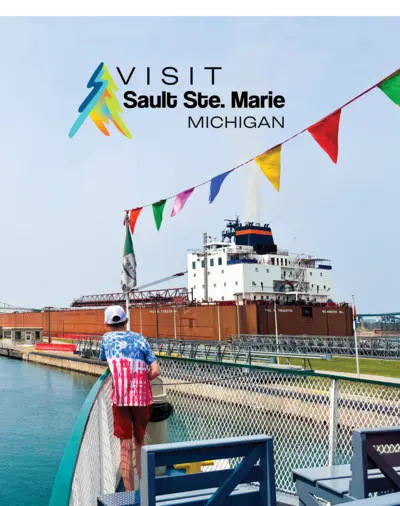Water Street in Sault Ste. Marie, Michigan, is a treasure trove of history, showcasing the lives and times of the city’s early inhabitants through its beautifully preserved historic homes. Each house tells a unique story, offering a glimpse into the past and reflecting the diverse cultural, industrial, and social heritage of the area. A visit to these homes is a journey back in time, highlighting the significance of Sault Ste. Marie as a pivotal location in American history. Here are some of the prominent historic homes you can explore:
John Johnston House

John Johnston, a British fur trader, along with his Ojibwe wife, Oshawguscodaywayquay arrived in Sault Ste. Marie in 1793 to establish himself as an independent fur trader. Johnston built the house in 1823 as an addition to an earlier log building. A one-and-a-half story, gable-roofed structure, it is of French Canadian “piece sur piece” construction (grooved upright posts with horizontal board infill.) Visit the house to learn about the fur trade, the Johnston family, and aspects of family, and aspects of family life on the western frontier in the 1900s. The current day site of the Johnston House is on the original John Johnston homestead established in 1793.
Henry Rowe Schoolcraft House

Elmwood, the Henry Rowe Schoolcraft home, was built downriver from the Johnston home in 1826-27. The federal-style home features a two-story main structure with two symmetrical wings. The west wing was Schoolcraft’s Indian agency office. The Schoolcrafts lived at Elmwood until 1833, when the Indian agency headquarters moved to Mackinac Island. Later, Elmwood was rented by Charles Harvey, who built the first locks at the Sault, and eventually became the home of prominent Sault merchant Peter Barbeau. Moved to its present site and restored in 1979, only the west wing is open to the public. The office exhibit contains items related to Schoolcraft’s work, with artifacts from the Chippewa County Historical Society.
Bishop Baraga House

The Bishop Baraga House was the residence of Bishop Frederic Baraga, a missionary known as the “Snowshoe Priest.” Bishop Baraga’s work among the Native American communities and his extensive travels by snowshoe during harsh winters are legendary. This house is significant not only for its religious history but also for its cultural impact on the region. It stands as a tribute to Bishop Baraga’s dedication and the enduring legacy of his mission work.
Kemp Coal Dock Office and Industrial Museum

Representing the industrial boom of Sault Ste. Marie, the Kemp Coal Dock Office and Industrial Museum offers insights into the city’s industrial past. This site was integral to the coal industry, which played a vital role in the region’s economic development. Today, the museum houses industrial artifacts and exhibits, providing visitors with a deeper understanding of the industrial advancements that propelled the city forward.
Plan Your Visit
Visiting the historic homes on Water Street is an enriching experience, offering a blend of historical, cultural, and architectural insights. Each home is a preserved piece of history, contributing to the broader narrative of Sault Ste. Marie’s development. Whether you’re a history enthusiast or a curious traveler, these homes provide a unique opportunity to connect with the past and appreciate the diverse heritage of this remarkable city. For more information and to plan your visit, check out the Sault Ste. Marie Historic Homes page and the Sault Ste. Marie Convention & Visitors Bureau.


